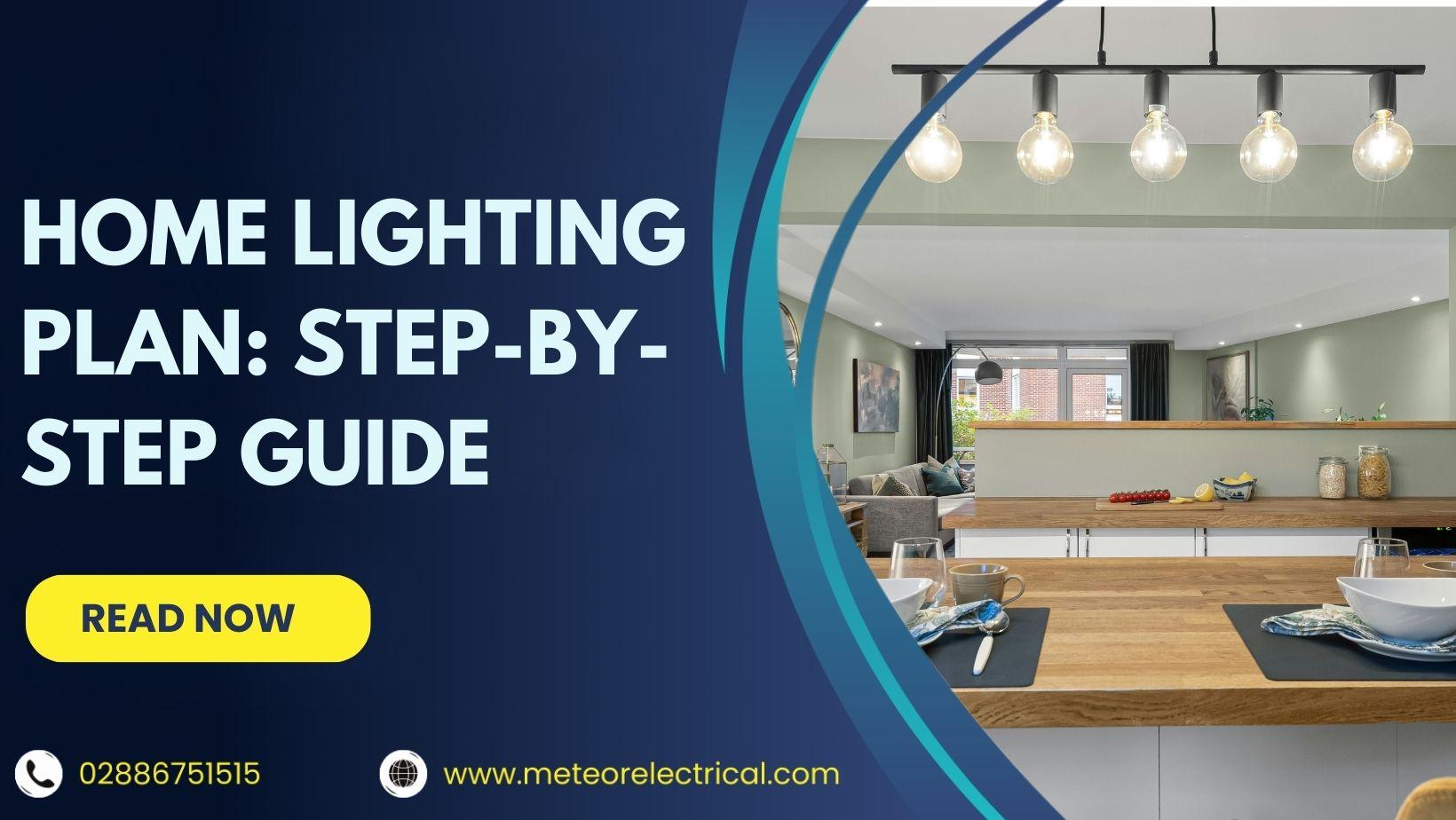The Perfect Home Lighting Plan: A Step-by-Step Guide
The Perfect Home Lighting Plan: A Step-by-Step Guide
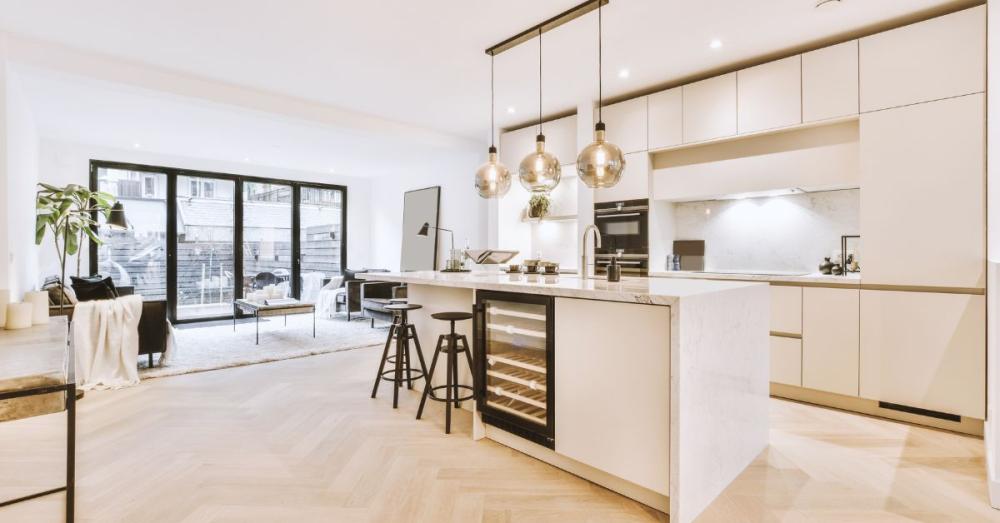
Instead of buying expensive furniture and decor, you can easily elevate your home through an excellent lighting plan. Whether building a new home or renovating an existing space, a good lighting design can make your home beautiful and functional.
In this guide, we’ll walk you through a practical, home lighting plan step by step so you can map fixtures, pick bulbs, and layer light like a pro, without blowing your budget.
We’ll cover a six-step process, the core lighting types (ambient, task, and accent), plus room-by-room tips for living rooms, kitchens, bedrooms, and bathrooms. You’ll also find a curated selection of LEDs and fixtures at Meteor Electrical to bring your plan to life.
For deeper reading on efficiency and safety, check out the U.S. Department of Energy’s overview of lighting choices and savings and the Energy Saving Trust’s guidance on LEDs and home lighting.
6 Steps to Create the Perfect Lighting Plan
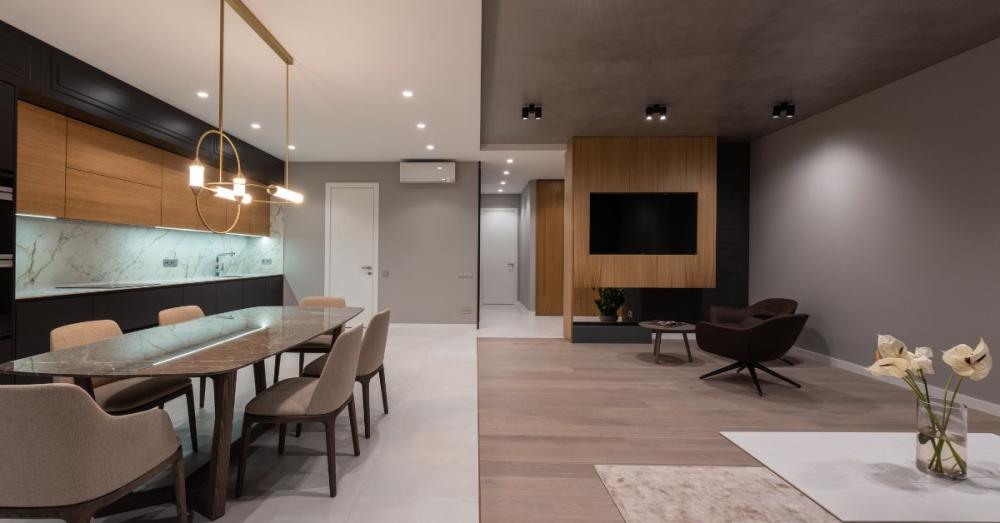
The best way to create a great lighting plan is by breaking down the process into helpful steps. This will give you a better idea of where to place lights and how to use them best.
Step 1: Create a Budget
A good starting point is establishing a budget because this will act as a guideline for your lighting design. Adding new luminaires can affect your bank account, whether it’s a small renovation project or a bigger lighting refresh. By creating a budget, you’ll better understand what lights you need.
Smart budgeting tips:
- Prioritise high-use areas (kitchen worktops, bathrooms, stairs/halls).
- Allocate roughly 40–50% for fixtures, 20–30% for bulbs/lamps, 10–20% for controls (dimmers, smart switches), and the rest for installation.
- Include a contingency for dimmer compatibility modules and extra bulbs.
Step 2: Draw a Floor Plan
A floor plan gives you a better idea of where to put your luminaires. Draw the plan to scale and add details, including door and window positions and furniture placements. This will help visualise how much lighting you need and where fixtures should be positioned.
For example, if your living room has large windows, you might only need a few luminaires. On the other hand, you can add accent lighting in various places to highlight decor/furniture pieces and seating areas. To create directional lighting, you can add smaller lights in hallways and other walking spaces.
Helpful planning pointers:
- Track natural light: which rooms are bright in the morning vs. evening?
- Mark zones: circulation routes, seating, dining, prep desks, reading nooks.
- Aim for appropriate light levels (lux): living rooms 100–300, kitchens 300–500 (500–700 over worktops), bathrooms 200–500, bedrooms 50–200.
- Downlight spacing rule-of-thumb: distance between downlights ≈ ceiling height (m) × 1–1.5.
Step 3: Pick a Design Style and Theme
Just as you would follow a colour scheme when designing a living space, you should also consider the theme and style of the light fixtures you want to install. With this in mind, you can create a cohesive design that is practical and functional. Lighting adds to the tone and atmosphere of your space, so it’s important to stick to a theme or genre of fixtures. That doesn’t mean you need to be rigid in your choices. In this step, you can get as creative as possible if the lighting is functional and elevates the room’s style.
Design consistency tips:
- Coordinate finishes (brass, black, chrome) with hardware and furnishings.
- Keep geometry consistent (rounded vs. angular forms).
- Vary scale: pair a statement pendant with low-profile supporting fixtures.
Step 4: Consider the Light’s Function
Before installing a fixture, consider the room’s function and how the lighting will play into it. The main objective of light is to be functional, so the best way to use it is by determining the room’s function.
For example, in the kitchen, you might need more lighting in the workspace section, or low-level lighting in the bedroom to create a cosy atmosphere. Think in layers:
- Task areas (cooking, reading, grooming) need higher illumination and good colour accuracy (CRI 90+ recommended for kitchens and bathrooms).
- Ambient lighting sets the overall mood and ensures safe movement.
- Accent lighting adds depth and draws attention to features.
Step 5: Consider Light Layering
Most light fixtures come in three styles: general/ambient, accent, and task lighting. Every good lighting plan should combine these styles to create layered lighting for an elevated space.
Ambient/general lighting creates general illumination, often acting as a functional base. Accent lighting is great for highlighting areas or decorative features in your home. Task lighting provides focused illumination for workspaces. Once all these layers come together, you can create a well-lit space.
If you’ve ever wondered about how to layer lighting in a living room, start with dimmable ambient lights, add reading lamps near seats, and finish with two or three accent points on shelves or art.
Step 6: Think About New Light Technologies
Light technology constantly evolves, with the newer models becoming more energy efficient. Many homeowners prefer installing LED lighting to reduce energy costs without compromising functionality. These luminaires also have a longer lifespan, so you don’t need to constantly replace them. Consider these in your plan to create a design-forward, highly functional space.
Quick checklist:
- Colour temperature: 2700–3000K for living/bedrooms; 3000–4000K for kitchens/baths.
- CRI: 90+ for accurate colours on food, makeup, and fabrics.
- Dimming: Always pair dimmable LEDs with compatible dimmers to avoid flicker.
- Smart controls: Scenes and schedules boost comfort and cut energy use.
Find the Best LEDs at Meteor Electrical
There are a wide variety of LEDs available in various styles; however, it can be hard to know which light bulb works best for you. If you are looking for versatile, efficient, high-quality LED lighting, visit Meteor Electrical. At Meteor, you can browse the Kosnic LED light line, which uses state-of-the-art LED technology.
Kosnic manufactures a wide variety of luminaires to fit every consumer’s needs. Here are some of the best LED lights you can find at Meteor Electrical:
1. Kosnic 9W LED Light Bulb
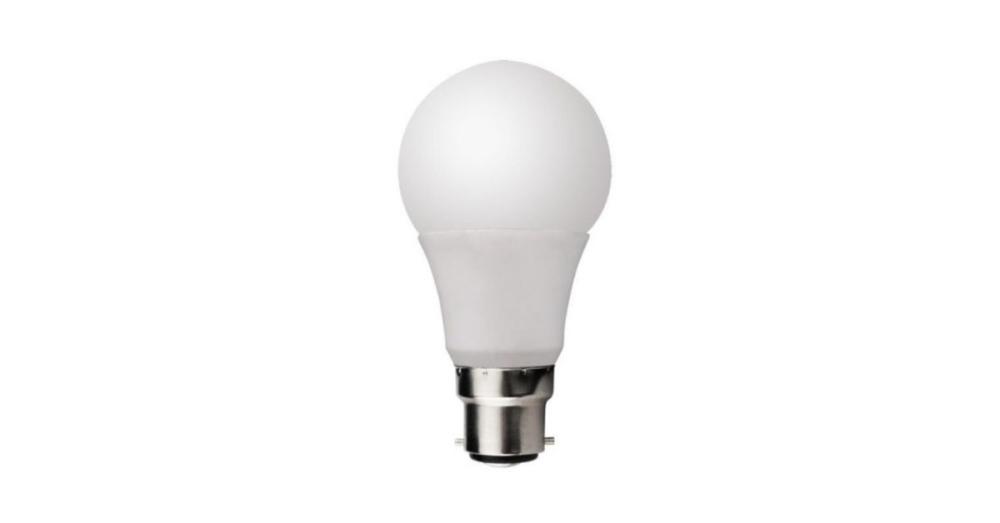
This is Kosnic’s most popular energy-saving LED light bulb. The 9W light bulb comes in a warm white shade, making it ideal for domestic applications. These 9W lamps reduce your energy consumption by up to 85% compared to traditional light bulbs. Look for 2700–3000K and CRI 80–90 options.
2. Kosnic 4.5W GU10 LED Lamp
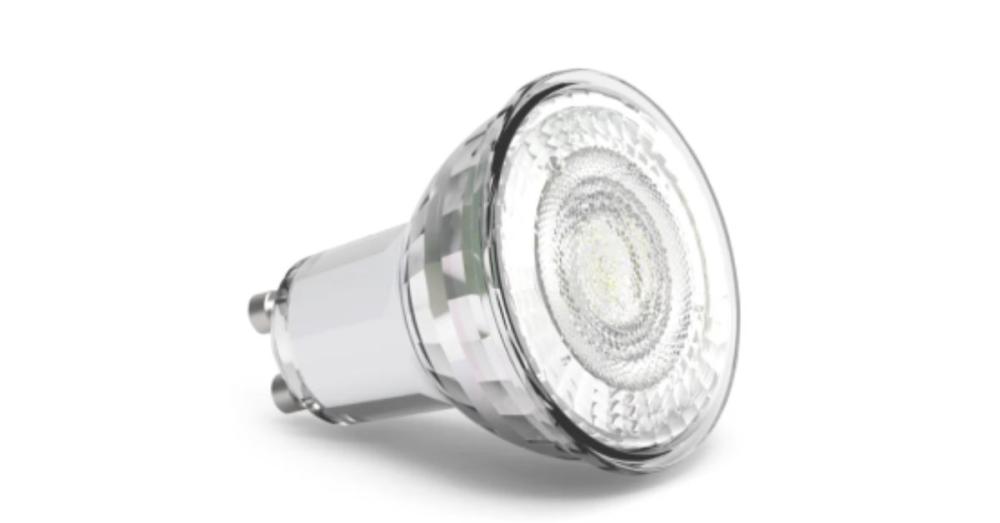
If you want to create a recessed lighting design with LEDs, this GU10 lamp is a great option. GU10 lamps are designed to fit seamlessly into recessed fittings to create an aesthetically pleasing lighting feature. This Kosnic lamp uses LED technology to create soft ambient lighting that is efficient and long-lasting.
Even though this lamp provides a warm white shade, you can also find the option in a cool white colour. Typical outputs are around 345–400 lumens with 36°–60° beam angles—ideal for kitchen task zones and feature lighting. Many shoppers look for the best GU10 LED bulbs for kitchen task lighting for exactly this reason.
3. Kosnic 4.5W LED Light Bulb
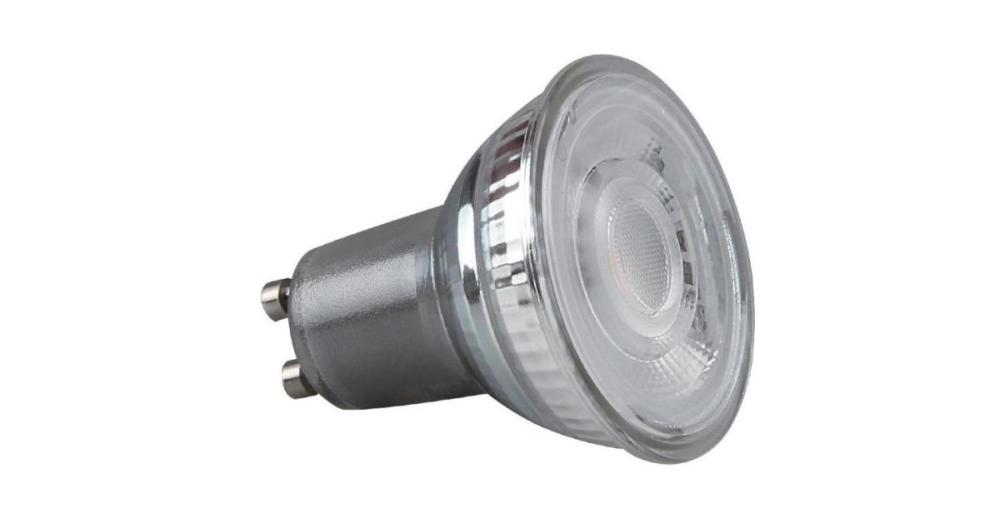
The Kosnic 4.5W LED lamp has a high-intensity brightness of about 340 lumens. This excellent energy-saving light bulb works best for household and hospitality applications. The Kosnic 4.5W lamp has a lifespan of over 30,000 hours, so you will save money on bulb replacement costs. Consider this for bedside lamps, wall lights, and hallways where gentle but effective light is preferred.
What Are the Different Styles of Lighting?
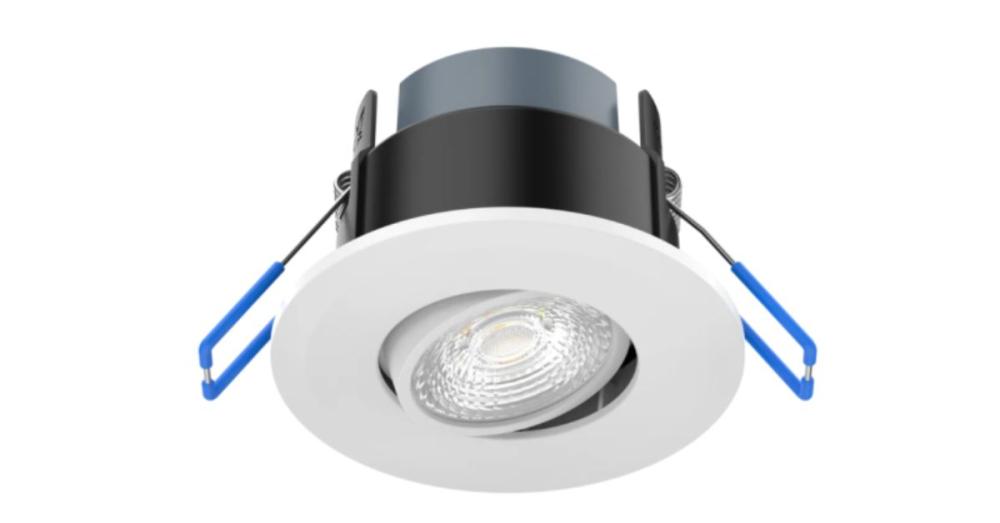
As mentioned, layering multiple luminaires is one of the easiest ways to design quality lighting. This will make your space more dynamic without the need for any additional equipment. Here are the different types of lighting designs you can use in homes.
Ambient/General Lighting
Ambient or general lighting is essential to any good lighting design because it provides overall illumination. This type of lighting is important for setting the tone for a space, and it also provides enough illumination for people to see and move around comfortably and safely.
In some applications, ambient lighting can also double as task lighting. When installing ambient lighting, you must make sure to use fixtures that will provide uniform illumination across the entire space. These lamps also provide illumination independent from other lighting layers.
Common ambient sources:
- Ceiling fixtures (pendants, chandeliers, flush/semi-flush mounts)
- Track lighting and recessed downlights
- Floor and table lamps for indirect, flexible light
Typically, LED ambient lighting in homes uses a warmer colour temperature. However, home office spaces might benefit from a slightly cooler white shade for better visibility and productivity.
Task Lighting
Task lighting is specially designed to help with tasks and work-related activities. This form of lighting is localised and can be found in various sources. These luminaires tend to be adjustable and controllable so that individuals can set the lighting according to their needs.
Effective task lighting should reduce glare and be bright enough to prevent eye strain. Generally, task lighting is used for reading, cooking, studying, and working. Before you select task lighting for home offices or study areas, consider the light output and the activity. Some individuals require much brighter lighting for work while others don’t; therefore, it is important to implement task lighting so homeowners can adjust lighting according to their work demands.
Desk lamps should be angled down to keep the light on the work and out of your eyes. Place the lamp on the side of your dominant hand’s opposite side to limit shadows. LED lamps are a great choice here as they provide direct light with minimal heat.
Accent Lighting
Accent lighting is generally used to create a focal point in a room. These lights build upon ambient lighting by adding dimension and can draw attention to a feature or object, such as artwork, decor, or plants. However, overusing these luminaires can create a cluttered look in any room, so plan carefully.
Common accent options:
- Adjustable recessed spots and wall-mounted fixtures
- Picture lights and wall washers
- Directional track heads and small LED spotlights
Angle beams 30°–45° onto artwork to minimise glare and create a crisp highlight.
Source - Eric Wang
How to Light Specific Areas of a Home
Some household areas require strong lighting, while others work well with accent fixtures. Depending on each area, you can create a specific lighting design to better control your lighting.
Living Room Lighting
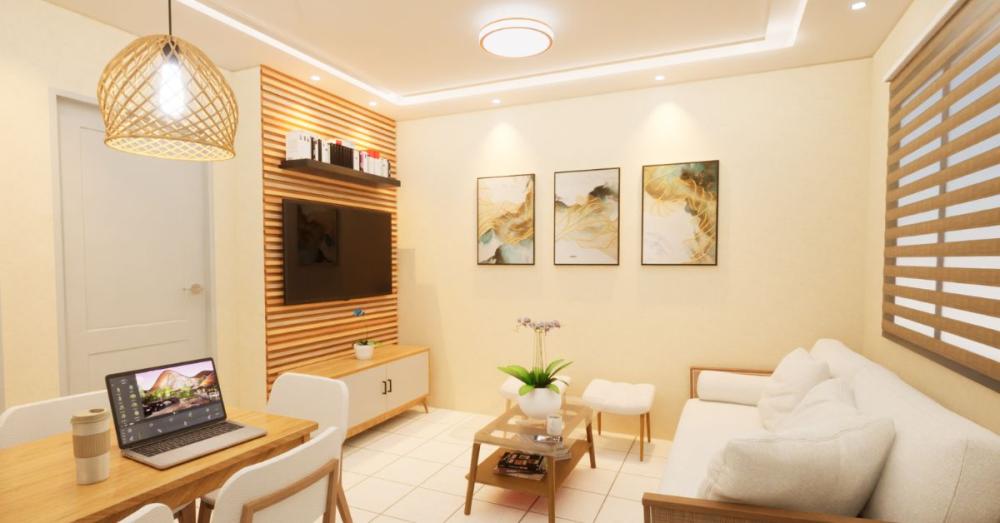
The living room is often one of the most important areas in any household, as people spend most of their time here. Therefore, having good lighting is crucial as it can make or break your living room’s atmosphere.
- Ambient: Dimmable ceiling pendants or evenly spaced downlights create a comfortable base (around 100–300 lux).
- Task: Floor lamps for reading corners, table lamps near seating, and picture lights for shelving or artwork.
- Accent: Adjustable spots for art, LED strips for shelves/coves, and wall washers for textured surfaces.
If you want a traditional and cosy look in your living room, consider subtle warm-white fixtures. Ensure colour temperatures are consistent—mixing a cool white desk lamp with warm ambient lighting can look disjointed.
If you’re looking at how to layer lighting in a living room, start with your ambient layer, add reading/task lamps, then finish with two or three accent points.
Kitchen Lighting
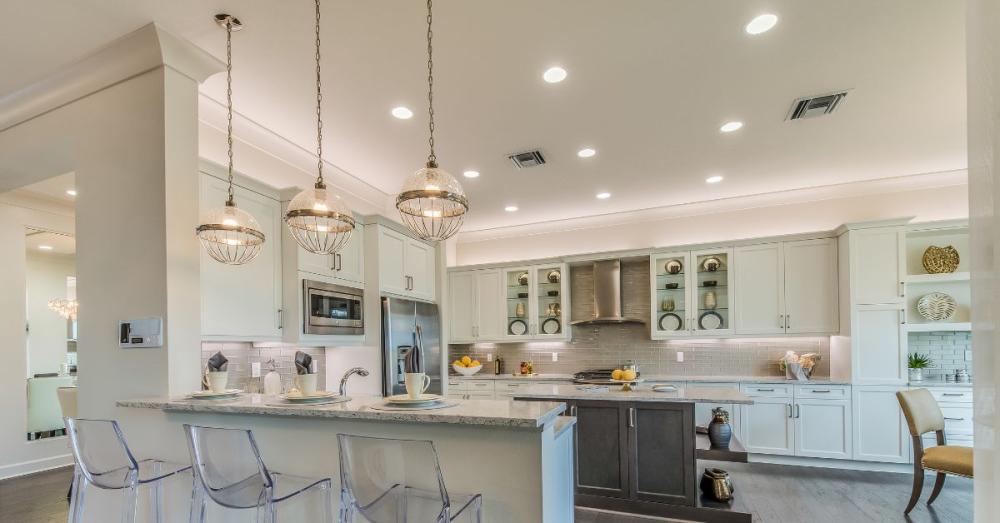
The kitchen is another busy area of the home, where bright and clear lighting is important to improve visibility and avoid any potential accidents. In many kitchens, homeowners opt for spotlights or downlights to create a focused beam of light onto countertops and workspaces.
- Ambient: A grid of downlights or a central pendant supported by spotlights.
- Task: Under-cabinet LED strips or pucks over worktops; pendants over islands; GU10 spots angled at prep zones.
- Colour: 3000–4000K for clarity; CRI 90+ for accurate food and surface tones.
- Beam angles: 36°–60° GU10s work well over counters and islands.
If you spend much time cooking, opt for cool-to-neutral white for visual clarity. The best GU10 LED bulbs for kitchen task lighting balance brightness, beam control, and colour accuracy—and you can find a strong selection at Meteor Electrical.
Bedroom Lighting
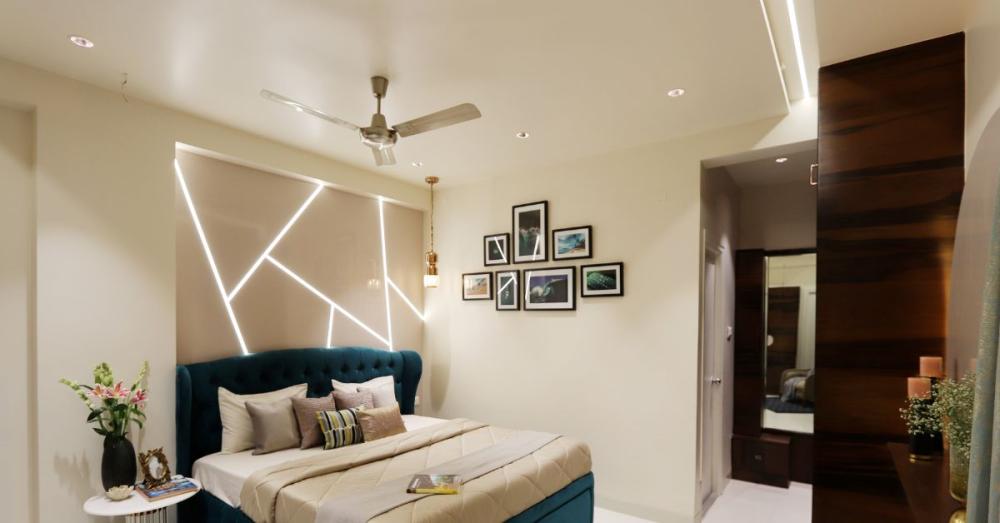
The lighting in your bedroom is important because you want to create a relaxing environment. The last thing you need in this room is harsh and cold light fixtures. These bulbs not only disrupt the atmosphere but can also interfere with sleep.
- Ambient: Warm white (2700–3000K) ceiling fixtures or shaded lamps for soft diffusion.
- Task: Bedside lamps with low-to-moderate lumens and focused beams for reading.
- Control: Add dimmers and consider motion-sensor night lights for late-night visibility.
Any bulb that emits blue-rich light late at night should be avoided in the bedroom. Since most bedrooms have multiple sources, you can be flexible—just keep the overall tone warm and restful.
Bathroom Lighting
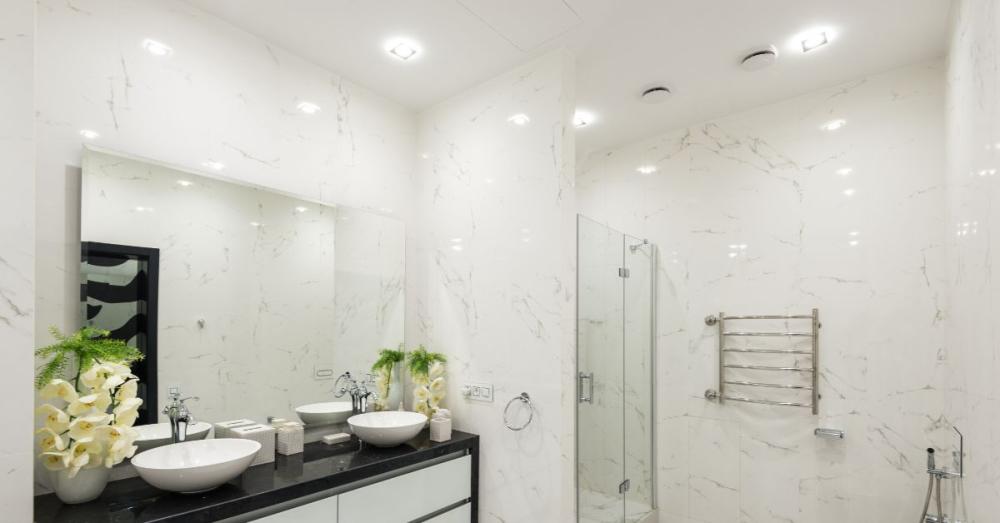
For bathroom lighting, you must opt for IP-rated light fixtures. Wet and humid areas such as bathrooms need luminaires with added protection so you can keep using your lights safely for a long time. Fixtures without an IP rating may not function correctly and can create hazards when exposed to water.
- Ambient: IP-rated recessed downlights (IP65 in shower zones are common).
- Task: Even, shadow-free lighting around mirrors—vertical sconces either side of the mirror or a top-and-sides configuration.
- Colour: 3000–4000K provides a clean yet flattering tone; CRI 90+ helps with grooming.
If you’re researching an IP-rated bathroom downlights guide, focus on zone classifications (0, 1, 2), appropriate IP ratings for each, and proper sealing/installation to keep moisture out. For clear safety guidance, consult Electrical Safety First’s bathroom zones advice.
Source- Lisa Holt Design
Energy Efficiency and Smart Savings
LEDs use significantly less energy than incandescent or halogen lamps and last far longer. The Energy Saving Trust explains that switching to LEDs can substantially reduce energy consumption and costs in a typical UK home. LEDs also produce less heat, improving comfort and safety—especially in enclosed fixtures or smaller rooms.
If you’re in the UK and want to cut bills without sacrificing quality, focus your search on energy-efficient LED lighting for homes UK. Pair LEDs with dimmers and smart controls to automate scenes, schedules, and occupancy sensing for additional savings.
Common Mistakes to Avoid:
- Mixing colour temperatures in one room (e.g., cool task lamp with warm ambient) creates visual clutter.
- Over-lighting: too many recessed downlights can flatten a space—add accents instead.
- Skipping CRI: low colour rendering can make food and finishes look dull.
- Ignoring beam angles: use wider beams for general coverage; narrower beams for highlights.
- Forgetting dimmer compatibility: not all dimmers work with all LED drivers.
Quick Room-by-Room Checklist:
- Living room: Dimmable ambient + two task lights + two accents.
- Kitchen: Grid of downlights + under-cabinet strips + GU10 task spots over prep.
- Bedroom: Warm ambient + dimmable bedside lamps + low-level night light.
- Bathroom: IP-rated downlights + vertical vanity lights + correct zone compliance.
Conclusion: Bring Your Plan to Life with Meteor Electrical
A thoughtful lighting plan can transform your home—boosting comfort, style, and safety while saving energy. Start with your budget and floor plan, match fixtures to room functions, build layers of ambient, task, and accent light, and embrace modern LED technology.
When you’re ready to shop, head to Meteor Electrical for quality LED bulbs, GU10 spotlights, and IP-rated downlights, backed by friendly expertise and dependable service. From cosy bedrooms to hard-working kitchens, Meteor Electrical has everything you need to execute your plan with confidence.
Shop LEDs and fixtures at Meteor Electrical: Explore a curated range of LEDs, GU10s, and IP‑rated downlights at Meteor Electrical.

